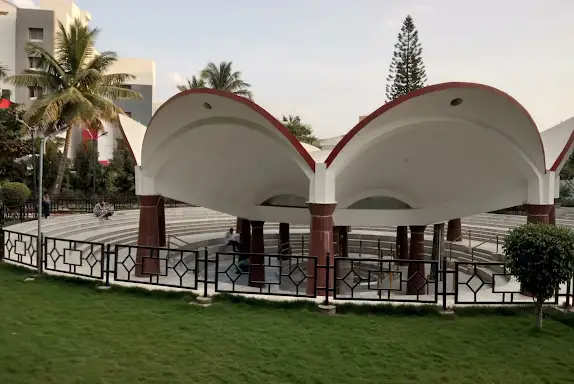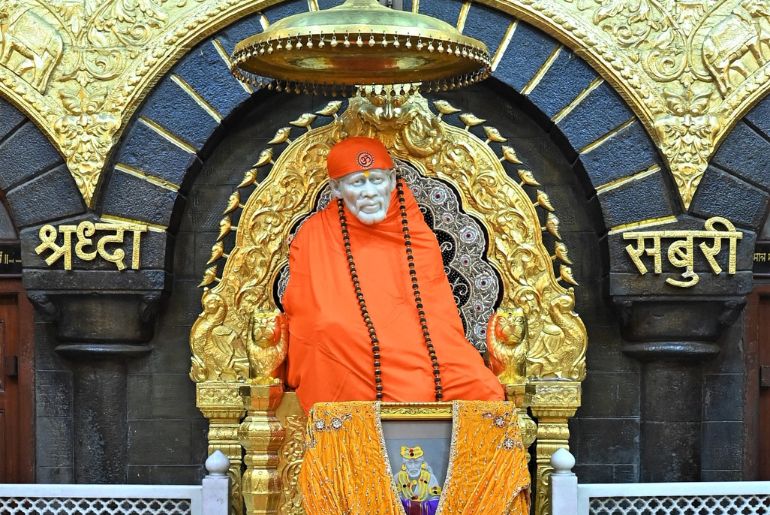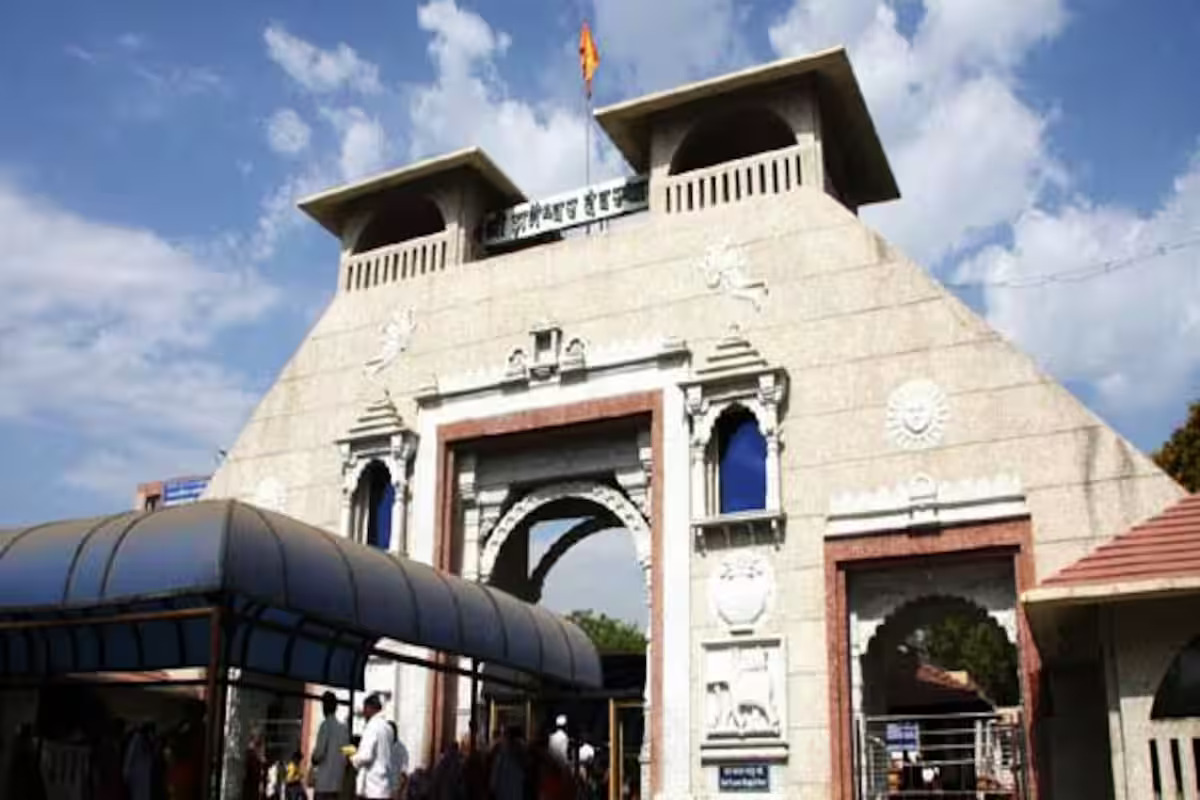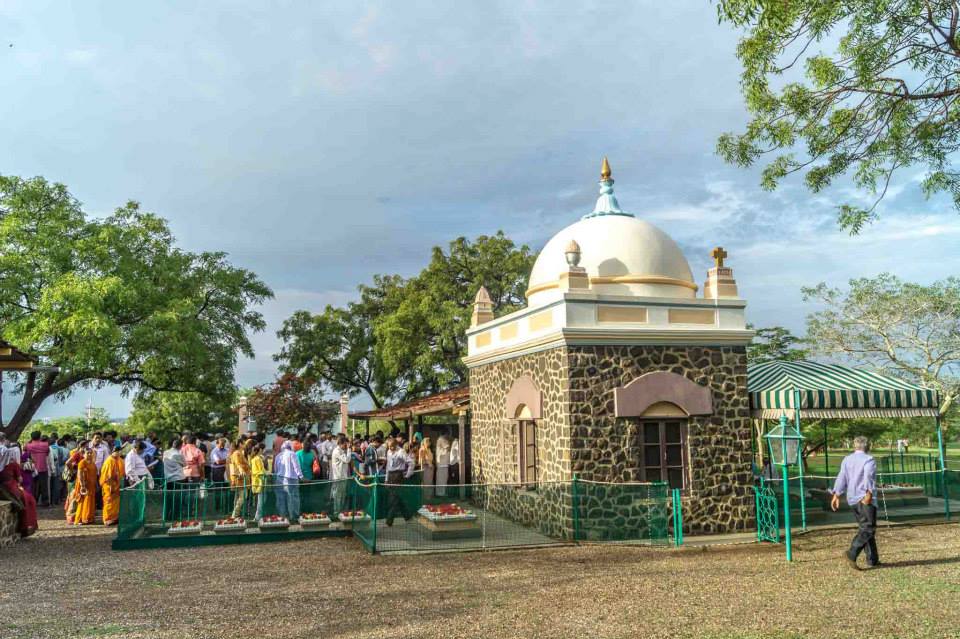TEMPLE
Vishal Ganpati
One of the most famous Hindu temple in Ahilyanagar, Sri Vishal Ganpati is believed to be 100 years old. Inspired by the architecture of Birla Mandir in Jaipur, here one can see a 3.6 m tall statue of Lord Ganpati amidst the marble floored hall. According to mythological records, the temple was built 100 years ago when a local devotee saw Lord Ganesha sweating. Watching Lord Ganesha in such a state was nothing less than a miracle. And that's when a temple was formed at this place with a statue of Lord Ganesh. People from all walks of life throngs to Sri Vishal Ganpati Temple during the Ganesh Chaturthi as it remains decorated with lights and flowers. Celebrity spotting is quite prominent during the Ganesh Chaturthi celebration.
JAIN TEMPLE
Anand Dham
A popular Jain pilgrimage center in India, Anand Dham is the resting ground of Shri Anand Rishiji Maharaj, a Jain religious leader. His teachings were deep rooted in love, non- violence & tolerance. He was proficient in nine languages & wrote extensively in Marathi and Hindi. Anand Dham was constructed in the memory of Shri Anand Rishiji Maharaj who died in 1992. Apart from its religious significance, Anand Dham is also famous for its location and lotus-shaped monument. Make a point to visit the Dharmik Pariksha Board, a library cum museum where tourists can see books in Marathi and Hindi about Jainism. On a visit to the museum, tourists get enlightened about the universal teachings of Anand Rishiji.
TEMPLE
Shirdi Sai Baba Temple
Shirdi Sai Baba, also called Sai Baba of Shirdi, (born 1838?—died October 15, 1918), spiritual leader dear to Hindu and Muslim devotees throughout India and in diaspora communities as far flung as the United States and the Caribbean. The name Sai Baba comes from sai, a Persian word used by Muslims to denote a holy person, and baba, Hindi for father. Sai Baba’s early years are a mystery. Most accounts mention his birth as a Hindu Brahman and his subsequent adoption by a Sufi fakir, or mendicant. Later in life he claimed to have had a Hindu guru. Sai Baba arrived in Shirdi, in the western Indian state of Maharashtra, about 1858 and remained there until his death in 1918.
CHURCH
St. John the Baptist Church
St. John the Baptist Church in Ahilyanagar is one of the city's oldest and most cherished places of worship. Established in a historic part of Ahilyanagar, the church is known for its colonial-era architecture, blending traditional Indian and European design elements. The exterior features a distinctive steeple and arched entrances, while the interior is adorned with beautifully crafted wooden pews, vibrant stained-glass windows, and a reverent altar dedicated to St. John the Baptist.
TEMPLE
Shani Shingnapur
Shani Shingnapur is a village where there are no door frames and locks in homes. Natives believe that ShaniDev protect them and their houses from any kind of theft or crime. The village is visited by devotees as well as tourists on ShaniAmavasya or no moon day falling on Saturdays. A temple is dedicated to Lord Shani and the idol enshrined is a slab of the rock. The premises of the temple have a tomb of Udasi Baba, a Sufi saint.
FORT
Bhuikot Fort
A beacon of rich Indian history in the middle of Ahilyanagar city. That’s exactly what the famous Ahilyanagar fort is. This gigantic and humongous fort is replete with memories from Indian history that have unarguably shaped the destiny of our country. From being the symbol of rise of the Nizam Shahi dynasty, to the testimony of ascendency of Mughals, to having witness the meteoric rise of Marathas and more importantly playing a very important in India’s freedom struggle, Ahilyanagar Fort has treasured in its humongous fort some of the most precious memories from Indian history. It is this special tryst with Indian history that makes Ahilyanagar Fort one of the most important historical monuments of India and hence also one of the most celebrated landmark places of Ahilyanagar city.
Tomb
Salabatkhan Tomb
This monument is the tomb of Salabat Khan II; the minister of Muethaza I (1565-1588 AD), the later himself was a builder of note. This tomb is an excellent example of Nizam Shahi architecture, which indicates a departure from the usual single chambered square type of tomb. The tomb is locally known as Chand-bibi-ka-mahal and it is located on a small hill and commanding a view of the surrounding countryside. Built on a lofty octagonal terrace of stone about 91.44 m in width and 3.66 m in height, the tomb consists of an octagonal hall about 3.66 m across surrounded by a three storied verandah about 6.1 m broad, the sides of which are faced with alternate open and closed arches, the later being provided with a number of smaller arched opening placed symmetrically. The whole building rises to a height of about 21.4m.
Museum
Cavalry Tank Museum
Cavalry Tank Museum, one of its kind in Asia, is all about tanks, self-propelled guns, specialist vehicles and armored cars, which have played a very important role in the country’s security over a different period. In 1994, Cavalry Tank Museum was officially inaugurated by Army Chief (late) Gen BC Joshi. All over the museum, one can find descriptive boards that give detailed information about each tank. World War I and II tanks; Japanese and German tanks; Pakistani tanks captured during 1965 and 1971 war, and armored car weighing 3,861 kg are amongst the popular exhibits of the museum. Also, here one can find tanks that perform specialized services such as aircrew recovery, bridge laying, mine-detonation, and dozing. On a visit to the museum, a profound sense of history radiates from the fort’s sheer stone face. The museum remains open for public even during the Republic Day and Independence Day.
Tomb Shrine
Meherabad
Meherabad is today one the most famous pilgrimage centers of Ahilyanagar city. Located around 9 kilometres in the south of Ahilyanagar city, Meherabad is home to Samadhi (tomb shrine) of famous spiritual saint Meher Baba, after whom the small town Meherabad has been named. For people of Ahilyanagar, Meher Baba was one of the greatest souls to have walked on the planet Earth. Born as Merwan Sheriar Irani in 1894 in the city of Pune, Meher Baba dedicated his entire life to spiritual enlightenment and social service.
Useful Links
Address
Station Road opposite Anand Rishiji Hospital Ahilyanagar. PIN – 414001.
© 2025 All Rights Reserved. Developed By OneVoice









